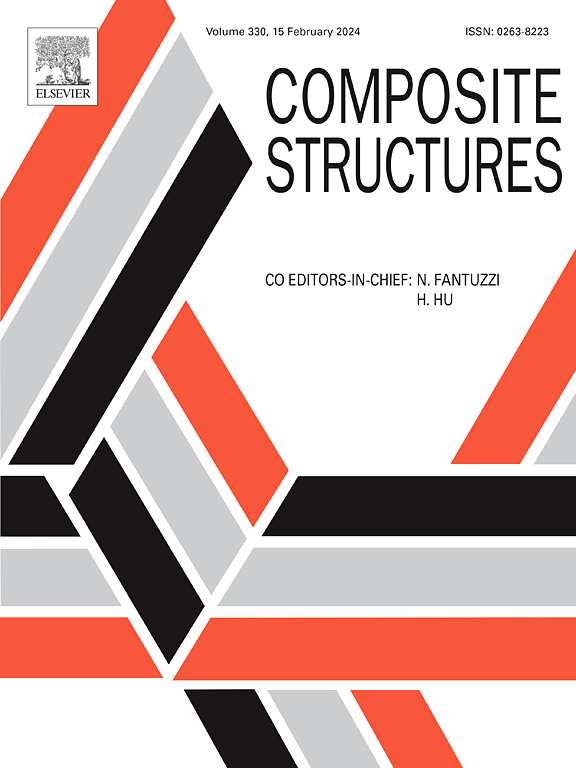Three-dimensional annular negative stiffness honeycomb structure design and performance study
IF 6.3
2区 材料科学
Q1 MATERIALS SCIENCE, COMPOSITES
引用次数: 0
Abstract
This paper introduces a novel three-dimensional annular negative stiffness honeycomb (ANSH) structure. Initially, a variety of center angles were used to design a negative stiffness honeycomb (NSH) structure, based on NSH theory principles. Finite element methods were applied to analyze its negative stiffness and mechanical properties under compression, identifying the optimal angle for unit structure. Subsequently, multiple layers were stacked to develop the three-dimensional ANSH structure. Quasi-static compression simulations and experiments with different layer counts demonstrated that the new NSH structure’s mechanical properties and energy absorption capabilities improve with increasing layer count. Moreover, for three-layer honeycomb structures with identical unit numbers, the three-layer NSH structure can withstand a maximum force threshold 1.55-fold higher than the three-layer OH structure when beam thickness is constant, and its energy absorption increases by 1.43-fold. Despite a 2.57-fold increase in beam thickness for the three-layer OH structure under the same mass, the mechanical properties and energy-absorption performance of the three-layer NSH structure remain comparable, and cyclic experiments indicate that it has superior repeatable energy-absorption characteristics. The printed structure shows self-recovery after deformation and effective shock absorption under various loading conditions, ensuring traversal capability and maintaining motion performance post-obstacle crossing, indicating significant potential for engineering applications.
三维环形负刚度蜂窝结构设计与性能研究
介绍了一种新型的三维环形负刚度蜂窝结构。基于负刚度蜂窝(NSH)理论原理,采用不同的圆心角设计负刚度蜂窝结构。采用有限元方法对其负刚度和受压力学性能进行了分析,确定了单元结构的最佳角度。随后,多层叠加形成三维ANSH结构。不同层数的准静态压缩模拟和实验表明,随着层数的增加,新型NSH结构的力学性能和能量吸收能力都有所提高。在相同单元数的三层蜂窝结构中,梁厚一定时,三层NSH结构承受的最大力阈值比三层OH结构高1.55倍,能量吸收增加1.43倍。在相同质量下,三层氢氧化钠结构的梁厚增加了2.57倍,但其力学性能和吸能性能仍然相当,循环实验表明其具有优越的可重复吸能特性。该打印结构在各种载荷条件下均表现出变形后的自我恢复和有效的减震性能,保证了穿越能力,并保持了过障后的运动性能,具有重要的工程应用潜力。
本文章由计算机程序翻译,如有差异,请以英文原文为准。
求助全文
约1分钟内获得全文
求助全文
来源期刊

Composite Structures
工程技术-材料科学:复合
CiteScore
12.00
自引率
12.70%
发文量
1246
审稿时长
78 days
期刊介绍:
The past few decades have seen outstanding advances in the use of composite materials in structural applications. There can be little doubt that, within engineering circles, composites have revolutionised traditional design concepts and made possible an unparalleled range of new and exciting possibilities as viable materials for construction. Composite Structures, an International Journal, disseminates knowledge between users, manufacturers, designers and researchers involved in structures or structural components manufactured using composite materials.
The journal publishes papers which contribute to knowledge in the use of composite materials in engineering structures. Papers deal with design, research and development studies, experimental investigations, theoretical analysis and fabrication techniques relevant to the application of composites in load-bearing components for assemblies, ranging from individual components such as plates and shells to complete composite structures.
 求助内容:
求助内容: 应助结果提醒方式:
应助结果提醒方式:


